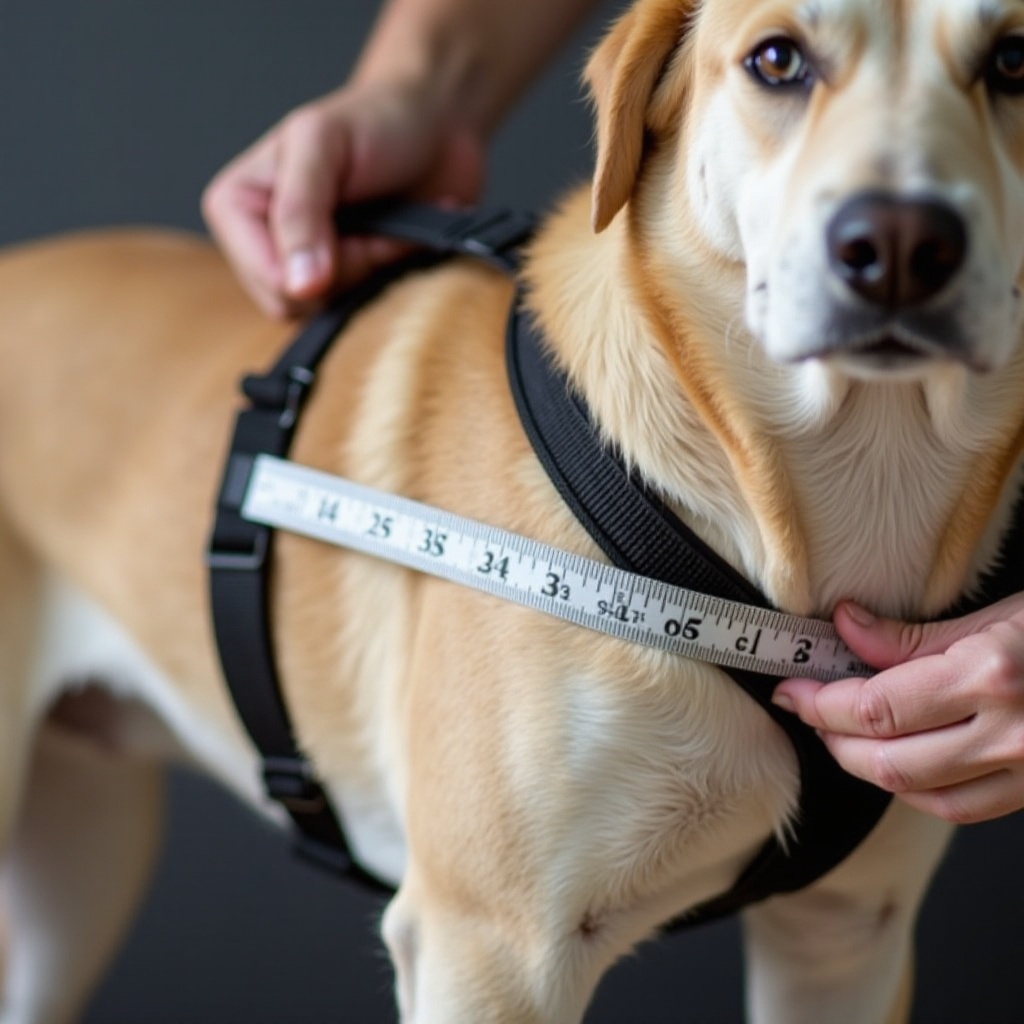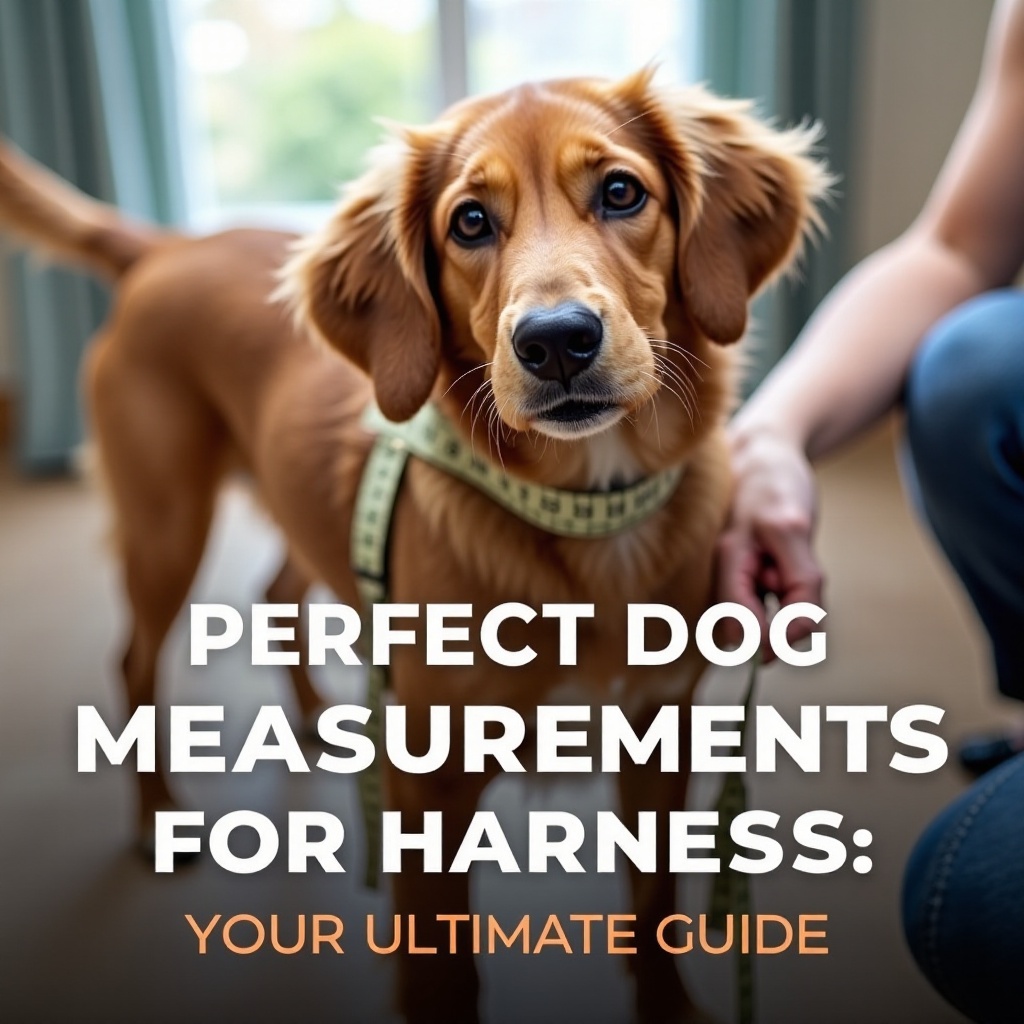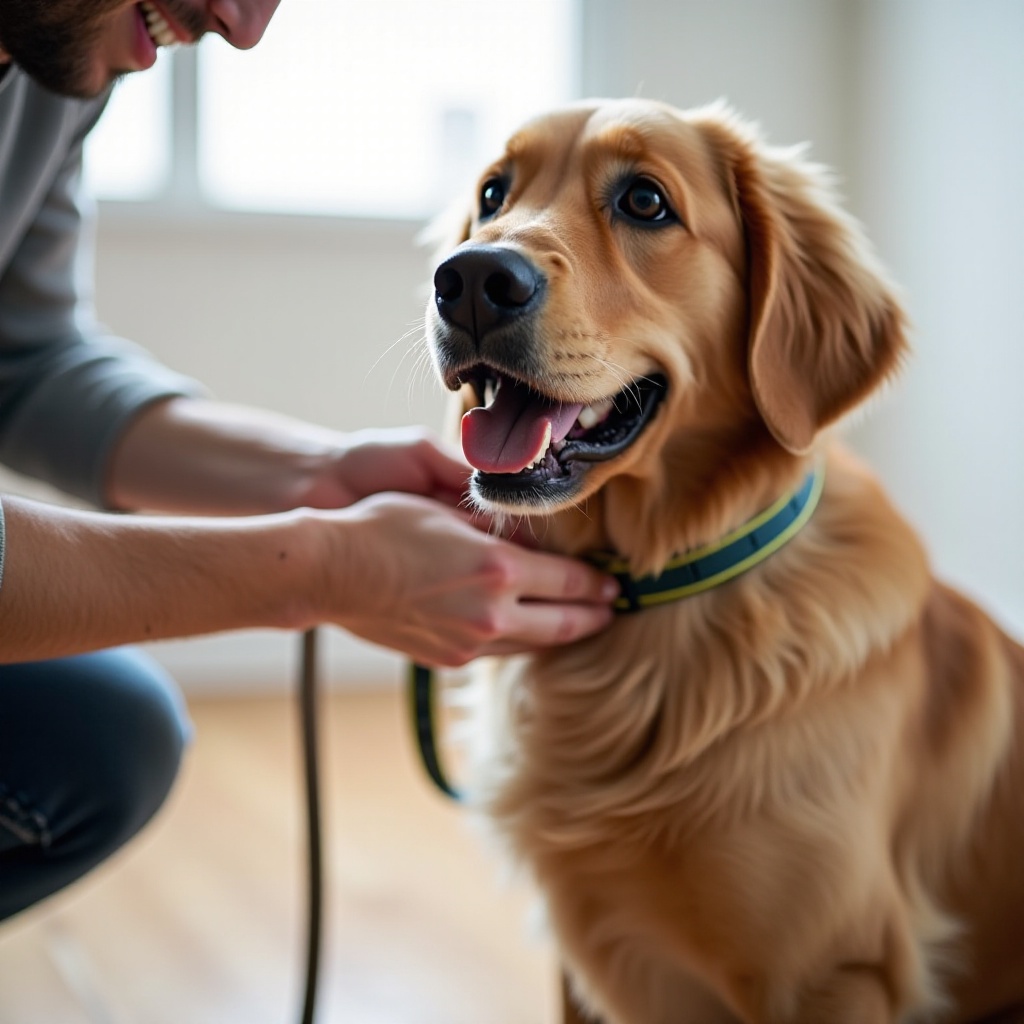Introduction
Getting the right harness for your dog is crucial for comfort and control. It all starts with accurate measurements, which are essential to ensure a perfect fit, preventing discomfort or escape. This guide will help dog owners understand the importance of precise measurements, the tools required, and the step-by-step process to obtain them. Additionally, we’ll explore how to compare these measurements to size charts, avoid common measuring mistakes, and offer tips for trying on harnesses smoothly.

Why Proper Dog Measurements Matter for a Harness
A well-fitted harness is essential for several reasons. It ensures your dog’s comfort by preventing rubbing and chafing, which can occur with ill-fitting harnesses. A properly measured harness also enhances your dog’s safety, reducing the risk of escape during walks. Additionally, it allows for better control, which is critical for effective training and preventing injuries.
Tight harnesses can restrict movement and cause discomfort, while loose ones may lead to escape or accidental injuries. Therefore, taking the time to accurately measure your dog is an investment in their comfort, safety, and your peace of mind.

Tools You’ll Need for Measuring Your Dog
Before measuring your dog, gather these tools to ensure you can take precise measurements:
- Soft Measuring Tape: Flexible and comfortable for your dog.
- Pen and Paper: To record the measurements.
- Treats: To reward your dog for staying still.
Having the right tools is crucial for selecting the perfect harness size for your furry friend.
Step-by-Step Guide to Measure Your Dog
Accurate measurements of your dog’s neck, chest, and girth are essential for a proper harness fit. Follow this detailed guide to measure each part:
Measuring the Neck
- Position your dog in a standing or sitting position.
- Wrap the soft measuring tape around the broadest part of your dog’s neck, where the collar usually sits.
- Ensure the tape is snug but not tight, allowing two fingers to fit under the tape.
- Record the measurement.
Measuring the Chest
- Find the widest part of your dog’s chest, typically just behind the front legs.
- Wrap the measuring tape around this area, keeping it parallel to the ground.
- Make sure the tape is snug but not tight.
- Record the measurement.
Measuring the Girth
- The girth is measured around the body just behind the dog’s front legs.
- Ensure your dog is standing upright for this measurement.
- Wrap the tape around the widest part of the ribcage.
- Confirm the tape is snug yet comfortable.
- Record the measurement.
By following these steps, you’ll have the necessary dimensions to find a harness that fits your dog perfectly.

Comparing Measurements to Size Charts
With your dog’s measurements in hand, the next step is to compare them to the harness size charts provided by different brands. Size charts typically display measurements in inches or centimeters and show the corresponding harness size. Select the size where your dog’s measurements fall in the mid-range to ensure the best fit. If your dog’s measurements are between two sizes, it’s generally better to choose the larger size for adjustability and comfort.
Correctly comparing your measurements to the size chart is vital in ensuring you pick the right harness that fits well and is comfortable for your dog.
Common Measuring Mistakes to Avoid
When measuring your dog, avoid these common mistakes:
- Using a rigid tape measure, which can lead to inaccurate readings.
- Measuring too loosely or too tightly, which can result in choosing an incorrect harness size.
- Not keeping your dog still, as movement can distort measurements.
Accurate measurements rely on careful, precise steps. Taking the time to measure correctly will save you time and frustration in the long run.
Tips for Trying on Harnesses
Once you have the harness, follow these tips to ensure it fits well:
- Ease into it: Allow your dog to sniff and get accustomed to the harness before trying it on.
- Adjust Gradually: Once on, adjust the straps to ensure a snug but comfortable fit. Ensure there are no areas that are too tight or too loose.
- Check Movement: Make sure your dog can move comfortably without any restriction.
- Observe Behavior: Pay attention to your dog’s behavior. If they show signs of discomfort, readjust the harness.
Following these tips will ensure a smooth transition when introducing your dog to a new harness.
Conclusion
Correctly measuring your dog for a harness is a fundamental step in ensuring their comfort, safety, and ease of movement. By following this guide and avoiding common mistakes, you can confidently choose a harness that fits perfectly.
Frequently Asked Questions
What should I do if my dog’s measurements fall between two sizes?
If your dog’s measurements fall between two sizes, opt for the larger size. This approach allows for adjustable fitting and ensures additional comfort.
How often should I remeasure my dog for a harness?
It’s advisable to remeasure your dog at least every six months or after any significant weight change to ensure the harness still fits appropriately.
Can I use a harness size guide from any brand?
It’s best to use the size guide provided by the specific brand you’re buying from. Different brands may have slight variations in their sizing.
